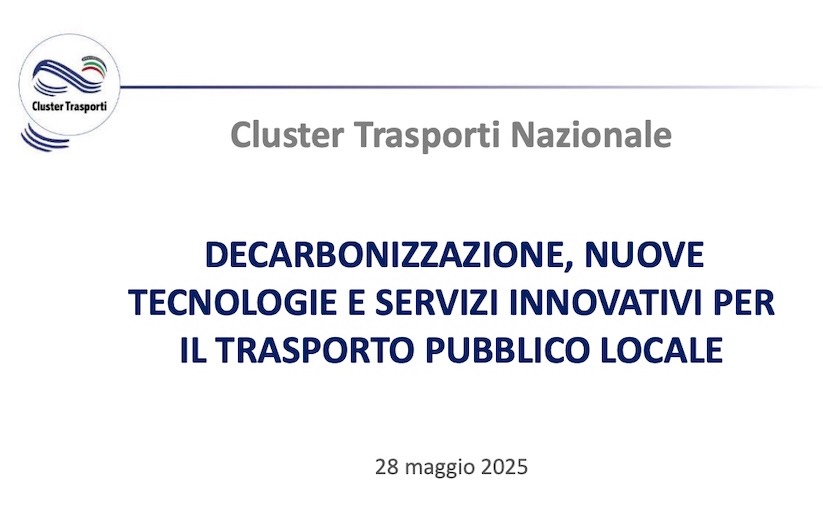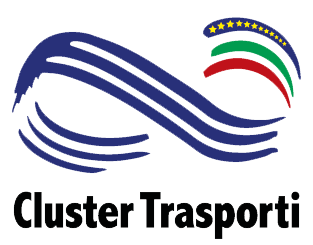TPL: a report by Cluster Trasporti on decarbonisation and innovation

Published 11 June 2025
In the current context, characterized by profound transformations in the field of transport, the need to understand the dynamics and future perspectives of local public transport (TPL) has become a priority for operators and stakeholders.
From this perspective, Cluster Trasporti has developed a document that takes stock of TPL in Italy and Europe, offering a complete overview of the sector’s performance, analyzed in terms of green transition, technological and service innovation, without neglecting issues related to investments and Total Cost of Ownership (TCO).
This report (which can be consulted at the following link) also offers an in-depth analysis of the challenges and opportunities awaiting the sector, highlighting the trends that will redefine mobility in the coming years.
The seventh transport revolution
Globally, the transport sector is affected by potentially “disruptive” innovations.
These trends, the subject of the recent Cluster Trasporti Conference, converge towards what is defined as the “seventh transport revolution”, destined to radically change the way people and goods move, as well as the planning, organization, and management of services and vehicles.
In this scenario, TPL is one of the most involved sectors, as it is called to a process of integration of systems and means that will most likely significantly change the current structure.
The Cluster Trasporti document
The role of TPL in Italy
The local public transport (TPL) sector in Europe manages 60 billion trips per year, with public investments of 40 billion euros generating an overall economic impact of 130-150 billion.
In Italy, local mobility is predominant, with three out of four trips completed within 10 km.
However, the modal share of public transport has remained stationary and well below pre-pandemic levels (-2.2% as a modal share).
The demand for public transport, both by road and rail, is approximately 10% below the 2019 value, and this decline is particularly pronounced in some regions of Southern Italy.
Trends in public transport use
The use of public transport is directly proportional to the size and wealth of municipalities, as well as the availability and quality of services offered. In particular, disparities in TPL use are evident between Central-Northern and Southern Italy, as well as between central areas and urban peripheries.
Car use, inversely proportional to income, is growing in extra-urban and peri-urban areas. As for intermodality, i.e., the combined use of different means of transport, it shows a meager share, varying between 1.4% in the South and Islands and 5.1% in the North-West Regions.
The investment plan for transport in Italy
Italy is implementing an important investment plan of approximately 400 billion euros for transport, also supported by PNRR and PNC (National Recovery and Resilience Plan and Complementary National Plan), and destined for strategic infrastructures.
The main beneficiary is rail transport, with 183 billion euros, equal to 45% of total investments, which will have significant repercussions on regional and local railway services.
For urban and metropolitan areas, on the other hand, 57 billion euros have been allocated, including 12 billion for renewing the vehicle fleet (buses and trains), 20 billion for mass rapid transit, and 5.4 billion for new tramways.
As highlighted by the Cluster Trasporti document, the completion of these interventions, however, will not compensate for the accumulated deficit compared to the main European countries for fixed-guideway systems (metros and trams).
Resources allocated to TPL in Italy
The resources allocated to financing TPL services in Italy (road and rail) amount to approximately 7 billion euros annually, of which over 70% comes from the National Transport Fund (FNT).
Despite this, the historical increase of the FNT has been extremely limited in the last ten years (just 300 million more since 2013), remaining well below inflation.
According to ASSTRA’s assessments, an increase of at least 800 million euros would be necessary to offset inflation.
Green transition and decarbonization
The Italian bus fleet numbers 100,000 vehicles, of which 43,000 are for TPL, and 85% of these are still diesel, with half being Euro V class or lower.
The average age of the TPL bus fleet at the end of 2024 is 10.3 years, significantly higher than the European average of 7.5 years.
The Italian bus market, in general, is experiencing strong growth thanks to PNRR and PNC funds, with alternative traction to diesel increasing: electric buses represent almost 18% and methane buses 22%.
The comparison of CO2 and other pollutant emissions reported in the document also highlights the fundamental role of fleet renewal and the use of bio/renewable fuels.
Technological innovation
The “seventh transport revolution” is primarily driven by the interaction of digital technologies, artificial intelligence, and the transformation of mobility services.
Technological innovations concern the vehicle (sensorization, autonomous driving), the service (fleet monitoring, electronic ticketing, infomobility), and the interaction between vehicle and the external environment (Smart Roads, C-ITS).
The concept of “Mobility as a Service” (MaaS), with integrated platforms, is essential to respond to demand fragmentation and is proceeding with experiments also financed in Italy by the PNRR.
Demand Responsive Transit (DRT), on the other hand, shows reduced costs and increased ridership, but is hindered by scalability problems, profitability uncertainty, and an insufficient regulatory framework.
New technologies also improve on-board and station safety through intelligent video surveillance systems and will transform job roles, requiring staff retraining.
An eco-rational approach to future mobility
According to the document, a diesel or mild-hybrid bus costs approximately half of an electric bus and allows for replacing twice as many obsolete vehicles for the same investment, with a reduction in emissions mainly linked to the elimination of older vehicles.
With the use of renewable fuels (HVO or biomethane), the WtW CO2 emissions of new diesels are similar to those of electric buses, making diesel a “rational” choice. Furthermore, hydrogen and LNG buses are scarcely available on the market, while electric and CNG buses are only available for Class I.
In terms of operating costs (energy and maintenance), they are on average higher for alternative fuels compared to diesel, and small and medium-sized companies struggle to manage multi-vector fleets due to lack of expertise.
All these data emphasize the need to adopt a gradual approach to energy transition, including with traditional technologies and low-carbon fuels, in order to improve service quality and, at the same time, stimulate modal shift.


